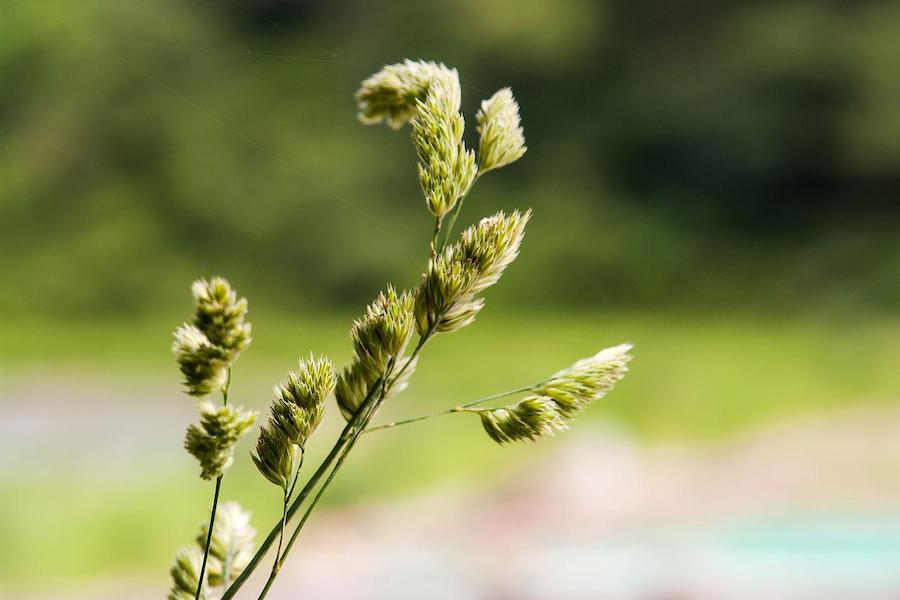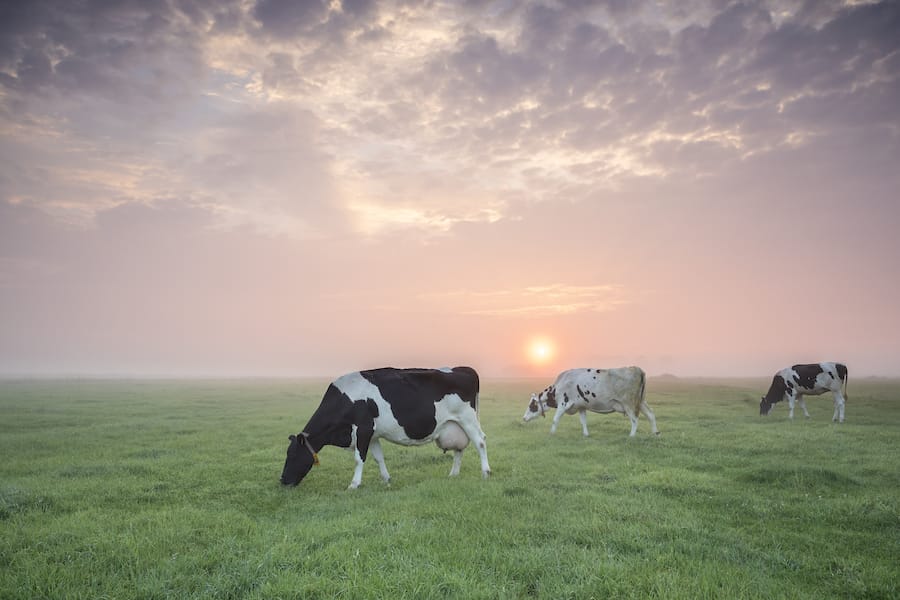We all have our ways to beat the summer heat.
From chilling by the pool, iced tea in hand to escaping to the cooler climes of a nearby getaway to immersing ourselves in a new outdoor sport, summer has become a time that most of us excitedly look forward to.
And as farmers, summers can be the best time for you and your herd too, provided you adjust your practices just a little bit to make sure that your yields and pasture are bountiful for your herd.
In this article, we'll dole out a few crisp tips that apply to grazing practices in beef, dairy, goat and sheep herds, and will help you stay on top of your summer grazing game!
Cool-season pastures
Nearly 60% - 70% of cool-season grasses grow in the early grazing season when the temperatures are below 75 degrees. This is followed by a spurt of productivity during the fall. In spring, when the grass grows well, cattle should be rotated in paddocks, with a 14-day rotation period. This rotation helps keep the forage vegetative.
As the heat goes up, the growth of the grasses goes down. So, the rest times for plants need to be increased to at least 30 – 45 days or a bit longer, if you can manage it.
Pastures should not be grazed shorter than 3-4 inches. This is because, at 3-4 inches, there are more tillers and residual leaf area at the bottom of the plant, which means it will grow back faster.
If your farm is experiencing heat stress or drought, follow this rule to the tee so that your plants come back with a bang after the onset of rain. Supplement with silage or feed if necessary.
Use summer annuals to ensure a steady supply of forage.
In the mid-Atlantic region, cool-season perennial forages usually make up most of the pasture. These could include orchardgrass, fescues, timothy, bromegrass, birdsfoot trefoil and red and white clover. These forages thrive in cooler weather and so, farmers like yourself are forced with slow-growing, unproductive pastures during hotter temperatures.

Instead, you could just plant warm summer annuals which is a great way to battle what is popularly called 'summer slump', and offer up high yields of pastures through the summer.
Read on as we explore a little more about both summer annuals and warm-season perennial grasses.
Summer annuals
Use summer annual forages like millet, sorghum or sudangrass to provide a rich feast of delicious forage for grazing in summer, when perennial grasses are usually low in quality and quantity. The options for summer annuals are plenty and you need to decide what the right mix for your pasture is.
There are five types of summer annual forage grasses:
- Sudangrass
- Sorghum sudangrass hybrids
- Forage sorghum
- Foxtail millet
- Pearl millet
Warm-season perennial grasses
Warm-season perennial grasses grow well in a temperature of about 80 degrees to 95 degrees.
With sod-forming perennial grasses like Bermudagrass, grazing should begin only when the average height of the plant is between 6 – 8 inches. Grazing should stop when the plant is less than 2 inches in height.
With native warm-season grasses like Eastern gamagrass, rotational grazing can be followed after the cattle have been removed and when the height of the plant touches 8 – 10 inches. Graze each paddock for less than 5 – 7 days and allow a rest period of 28 – 45 days between rotations, as per the weather.
If you graze continuously, it will cause a loss of stand.
Remove your cattle from native warm-season pastures by the end of August. This allows the roots to store a good amount of carbohydrates, enough to survive the winter.
One thing to note is that warm-season forages usually have a low nutritive value when compared with cool-season forages. So, you may have to consult a livestock nutritionist to make sure that your herd is getting what they need. You could always supplement their diet if the nutritionist advises you to do so.
Using summer crops is also a good way to prevent over-grazing but wait for a second, let's back up here a bit and talk about pasture management in summer on the whole, before zeroing in on overgrazing and summer crops.
Pasture management in summer
What is the main difference between summer and spring pasture?
In summer, the leaf emergence rate and overall growth of the pasture are much slower due to dryness and lack of moisture.
As we discussed earlier, increasing the number of days in your rotation is a great way to up your growth and increase the quantity of feed for the autumn season that will pop by quickly enough.
Allocating pasture allowance
In non-irrigated areas that are super dry due to the hot summer months, high temperatures and moisture stress cause an accumulation of dead material in the base of the pasture.
This will end up increasing the dry matter (DM) percentage and fibre but also reduces the quality of pasture. This is something that needs to be considered when you're allotting daily pasture allowances.
Summer nutrition
As the DM% increases in summer pasture, there is much more dry matter for cows to eat in summer, compared to in spring.
A good rule to remember is that a cow in mid-lactation requires approx. 16% crude protein.

If you're low on protein during the summer, opt for a supplement that's high in non-degradable dietary protein, also called as UDP, which is required to generate a milk solids response. Feeding supplements that have high values of rumen degradable protein or RDP, will not help improve production.
It's also important to be mindful of some summer strategies that will keep your herd healthy and happy.
- Heat stress: Make sure that you identify heat stress in your cattle right from the early stages and take the necessary measures.
- Feeding supplements keeps animals in production longer than would be possible during a dry summer.
- If it suits you and your cows, milking once a day or 3 times in 2 days can take the pressure off your cows.
- Reduce demand by culling low producers.
- Irrigation
If you are irrigating your pasture, then regularly monitor your soil moisture level. You could also head to pasture.io where we could supply you with useful tips to maintain your pastures well, and have concrete contingency plans in place for droughts or unpredictable weather conditions.
Something we usually advise farmers who face these types of challenges is to fully water the best part of your farm, than wasting resources in fully watering the entire farm.
Do not over-graze
Most of a plant's reservoir of energy is usually stored in the bottom 4 cms of the plant. Over-grazing pastures reduce these energy stores and thus, the plant ends up re-growing very slowly once the moisture comes in, during the autumn rains. Overgrazing, again and again, can even cause plant deaths in summer.
You have to make sure the pasture is managed so well that as soon as it rains, the pasture springs up and responds beautifully.
Instead of over-grazing, you can turn to other options like:
- Incorporating summer crops (like we mentioned above)
- Culling low-producers so that your demand is reduced
- Supplemental feed
- Using stand-off facilities
Do not under-graze
Your post-grazing residuals should not be bigger than 4.5 cm in summer. If there are higher residuals than this, it causes pasture quality to deteriorate. Dead material in the base of the pasture will rot in rainfall.
In areas that are susceptible to facial eczema these high residuals coupled with the dead matter in the base of the sward increase the chances of facial eczema and high spore counts.
Instead of under-grazing, you could:
- Check your residuals after grazing is done and then adjust your allocation allowance accordingly
- Measure your pre-grazing covers
- Eliminate supplements
Follow these tips, farmer friends, and we're sure that you will be looking forward to making the most out of summers spent with your cows!
This article referenced the following sources, Pasture.io’s own repository of wisdom, College of Agriculture, Food and Environment, Drovers (Farm Journal, Inc.), Heritage Land Bank, New Technologies for Agriculture Extension, and DairyNZ.
Until we meet again, Happy Farming!
- The Dedicated Team of Pasture.io, 2020-10-05